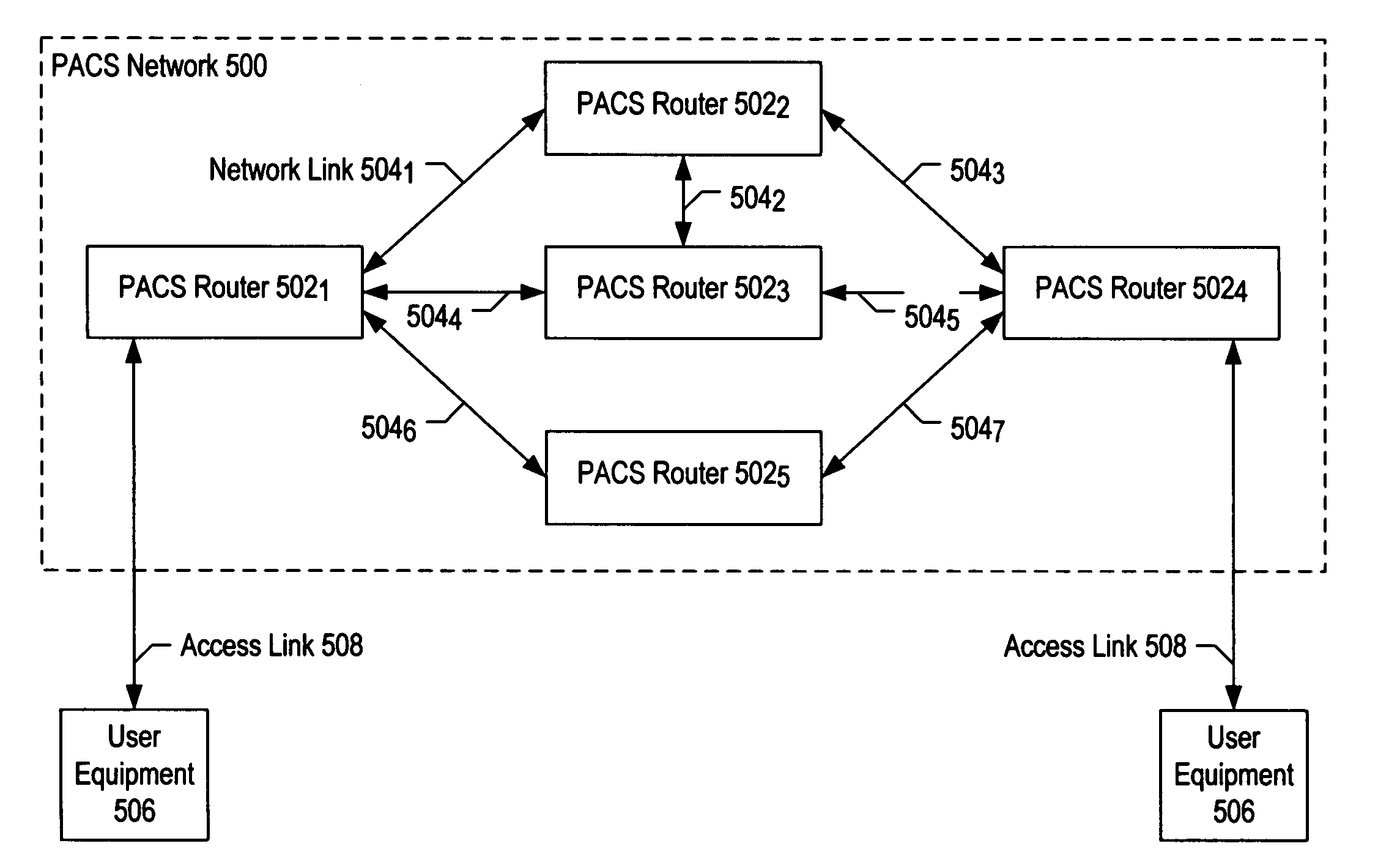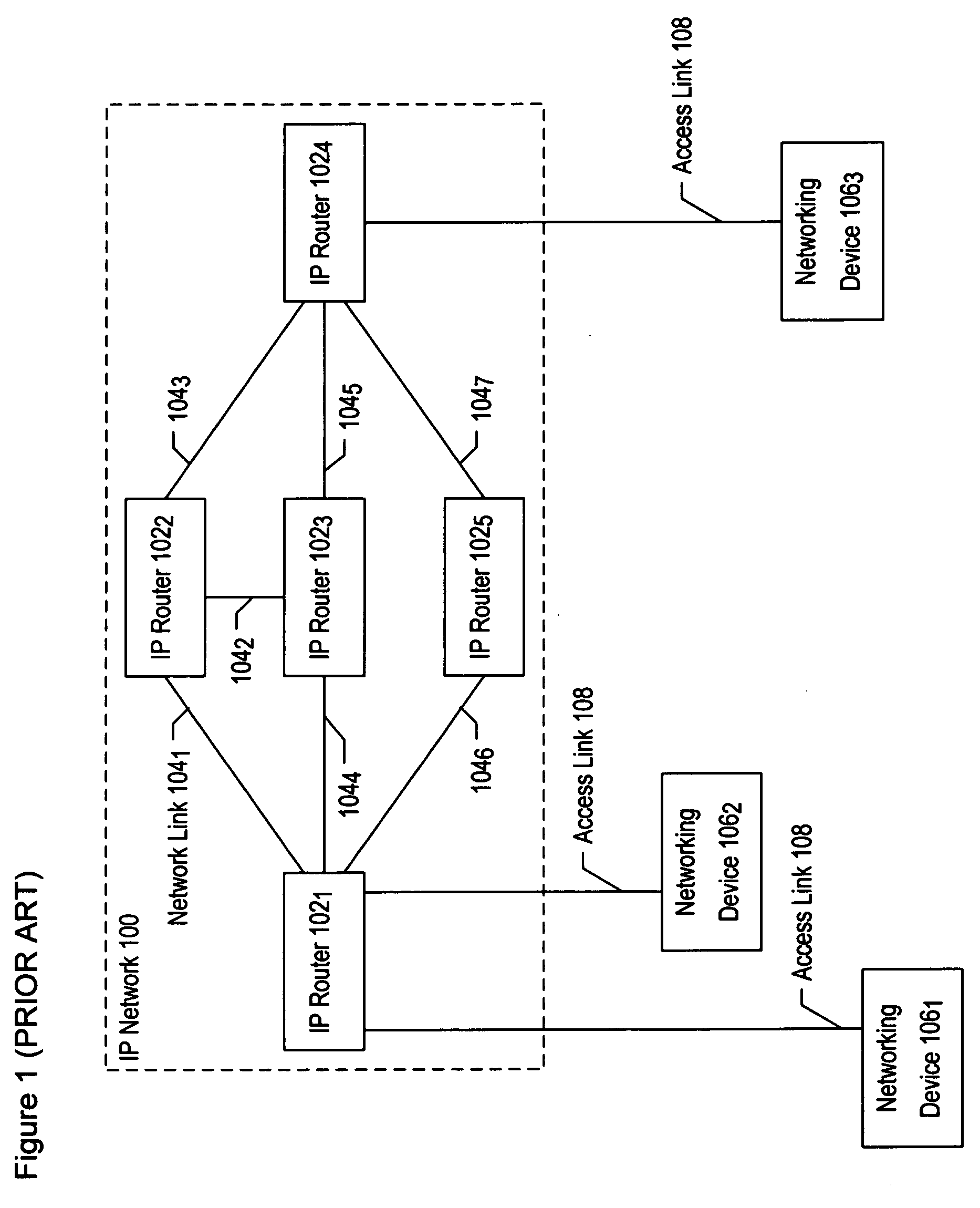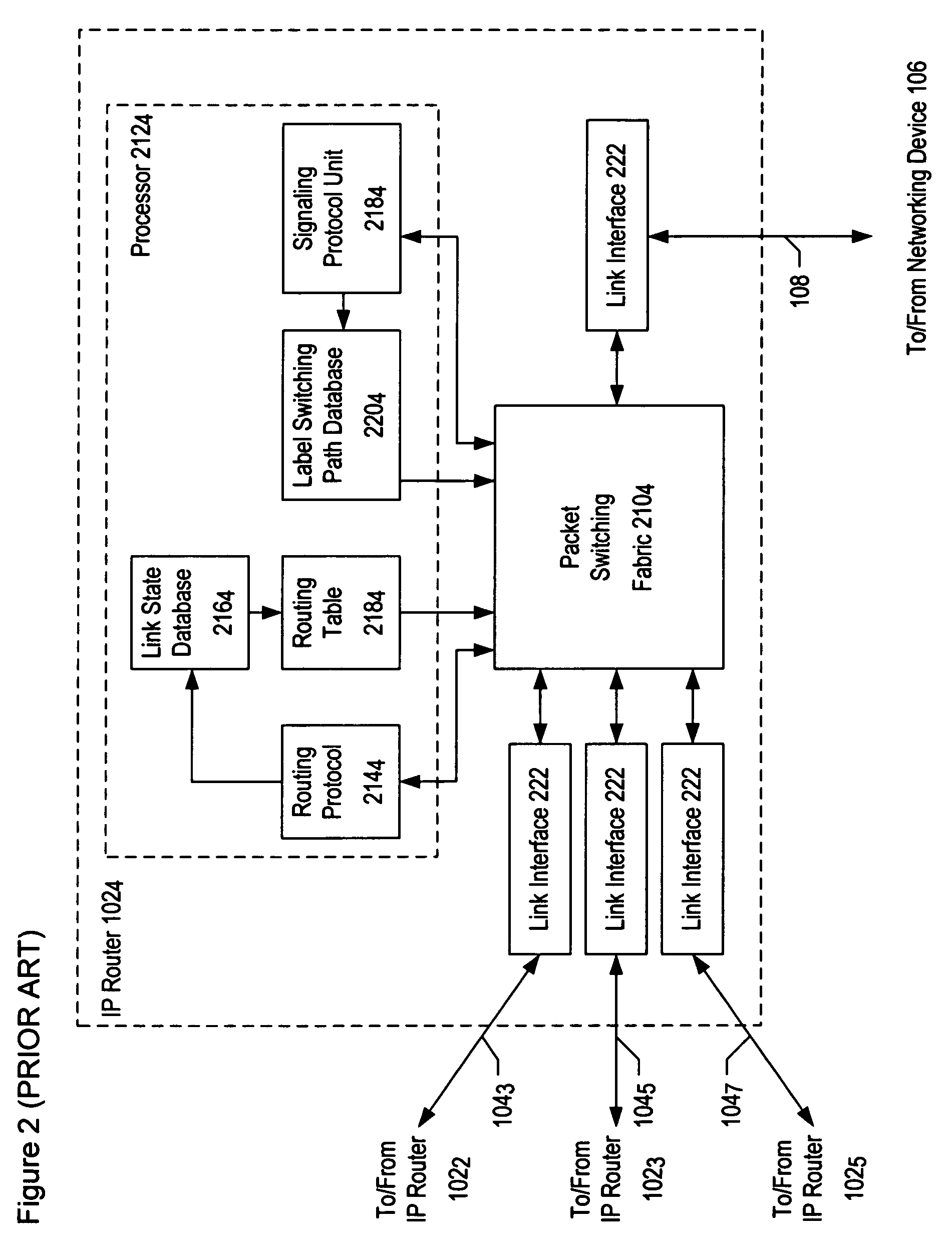Method and apparatus for improved IP networks and high-quality services
a technology of ip network and high-quality services, applied in the field of communication network, can solve the problems of high maintenance costs of separate voice telephony network, unable to meet unable to achieve the quality of service on pre-existing voice telephony network, so as to achieve fast restoration of traffic and faster failure detection
- Summary
- Abstract
- Description
- Claims
- Application Information
AI Technical Summary
Benefits of technology
Problems solved by technology
Method used
Image
Examples
Embodiment Construction
[0056]FIG. 5 depicts a block diagram of the salient aspects of a communications network in accordance with the illustrative embodiment of the present invention. PACS network 500 comprises PACS routers 5021 through 5025 and network links 5041 through 5047. PACS network 500 is interconnected to user equipment 506 via access links 508.
[0057] PACS router 502i, where i=1 through 5, is a network router capable of switching signals that comprise either information circuits or information packets to any PACS router or user equipment to which it is connected based on a quality-demand associated with each signal. PACS router 502i is described below and with respect to FIG. 6.
[0058] Network link 504i, where i=1 through 7, is a multi-channel, bi-directional communications link which comprises a plurality of circuit-channels and a plurality of packet-channels. Network link 504i interconnects transmitters of a first PACS router with receivers of a second PACS router to provide communication in ...
PUM
 Login to View More
Login to View More Abstract
Description
Claims
Application Information
 Login to View More
Login to View More - R&D
- Intellectual Property
- Life Sciences
- Materials
- Tech Scout
- Unparalleled Data Quality
- Higher Quality Content
- 60% Fewer Hallucinations
Browse by: Latest US Patents, China's latest patents, Technical Efficacy Thesaurus, Application Domain, Technology Topic, Popular Technical Reports.
© 2025 PatSnap. All rights reserved.Legal|Privacy policy|Modern Slavery Act Transparency Statement|Sitemap|About US| Contact US: help@patsnap.com



